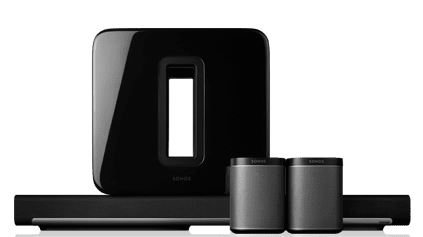1 To borrow or not to borrow?
Philip wants to purchase a new Sonos sound system costing £1000. If you assume that he cannot simply fund the purchase out of his monthly budget, his options include:
- using existing savings
- building up savings first, then purchasing the item later
- using a mixture of savings and debt
- borrowing £1000.
Activity 1 What are the deciding factors?
What factors will affect the decision Philip takes as he chooses from the four options available? Before you look at the feedback try analysing for yourself the issues involved in each option, using what you’ve learned so far.
Feedback
Let’s start by running through some generic issues related to each option.
- Option 1 involves using existing savings. When deciding whether or not to use his savings, Philip might think about the ‘opportunity cost’ involved. What’s this? It’s a neat technique to help weigh up tricky choices. Here’s how to work out the opportunity cost in Philip’s case: if he uses his savings to buy the music system they will not then be available to buy something else. He will also have to give up the interest he would have received on those savings. He might want to compare debt costs with the loss of income on his savings. In normal circumstances it’s likely that the interest rate for debt will be higher than the rate earned on savings.
- Option 2 is to build up savings before purchase. Again, this depends on having disposable income to allow savings to be built up. It also depends on Philip being prepared to defer the enjoyment of the music system. For the same reasons as Option 1, this second option is most likely to be cheaper than using debt to fund the purchase.
- Options 3 and 4 both involve taking on debt. For the reasons already given, it’s likely that using a mixture of savings and debt would be cheaper than funding the purchase solely through debt.
Activity 2 And what are the deciding factors now?
Let’s say that Philip chooses to borrow the full £1000 to buy the system.
What factors will he now need to consider?
Feedback
- Philip would need to think about the constraints on his resources and calculate whether he can afford the repayments within his household budget.
- In terms of the affordability of the debt, Philip should consider the possibility that his circumstances might change. For instance, if his household income were to fall or be interrupted during the term of the loan, would Philip still be able to afford the repayments? This assessment of affordability is essential – and it will, in any case, be undertaken by the lender when scoring Philip’s creditworthiness ahead of approving a loan.

